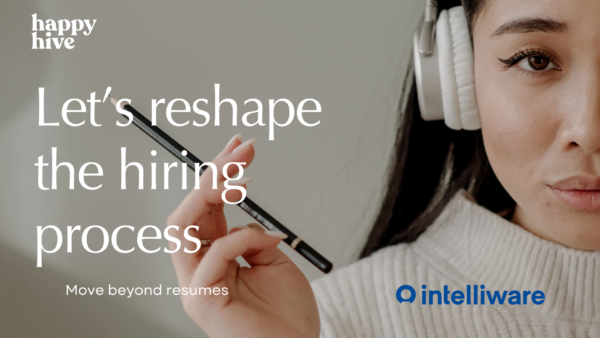AI has officially moved out of the lab and into the enterprise and honestly, it's about time. What started as neural networks gathering dust in research papers has transformed into generative systems running in production, serving billions of users daily. The shift isn't just massive; it's forcing organizations everywhere to completely rethink how they deliver technology, manage talent, and stay competitive.
At Electric Mind, we're witnessing this transformation play out in real-time across our client base. And here's what we're seeing: especially in financial services, AI isn't just trimming costs around the edges. It's fundamentally redrawing the map of product design, operations, and IT delivery.
The Three Eras of AI (And Why This One Is Different)
Let's take a step back and put this moment in context. We've been here before or at least, we thought we had.
- The Foundations Era (1990s): Neural networks were fascinating in theory but completely impractical. AI lived exclusively in academic labs, more science experiment than business solution
- The Big Data Boom (2010s): Cloud computing finally unlocked training at scale, but let's be honest, "Big Data" mostly overpromised and underdelivered. We got a lot of dashboards and not much transformation
- The Generative Era (Now): Here's where everything changed. Transformers didn't just improve performance—they shattered the ceiling entirely. Today's models like GPT-5 can process hundreds of thousands of words in context, maintaining coherence across conversations that would have been impossible just years ago. Domain-specific models are now rivaling human experts in law and medicine, achieving 85-90% accuracy rates that would have seemed like science fiction not long ago.
And the investment? It's staggering. Hyperscalers poured $197 billion into AI infrastructure in 2024 alone, and they're doubling down again this year.
But here's the crucial difference: unlike past hype cycles, this era isn't about shiny demos that fall apart in production. We're talking about building systems that can actually reason, plan, and act in the real world.
From Static Tools to Dynamic Systems
What we're seeing isn't just incremental improvement, it's a complete reimagining of how IT works at every layer:
- Customer Experience: Remember those clunky search boxes that never quite understood what you were looking for? They're giving way to conversational interfaces that feel genuinely human. Your customers can now describe what they need in plain English and get exactly that.
- Operations: Traditional workflows, those rigid, step-by-step processes we've all grown to love and hate, are being replaced by AI agents that adapt, learn, and optimize in real time. It's like having a teammate who never sleeps and gets smarter every day.
- Software Development: And this is where it gets really exciting for us as builders. Hand-coding is rapidly giving way to AI-accelerated development, where natural language prompts can generate architecture docs, comprehensive test cases, and production-ready code in minutes, not days.
This isn't theoretical anymore. It's real, working code. We're watching requirements flow seamlessly into design, design into architecture, and architecture into build plans. Faster, smarter, and with fewer barriers between vision and delivery than we've ever seen.
Agentic AI: From “Answers” to “Actions”
Now here's where things get truly interesting. The next leap isn't just about better responses, it's about systems that don't just respond but actually execute. Instead of programming every single step, you set the destination and let the AI figure out the route.
Let me give you a concrete example from our work. In our sprint steward use case, we've deployed a suite of agents—Planner, Reviewer, Approver, and Guard—that coordinate Jira updates directly from team conversations and project evidence. The result? Actionable tasks that are policy-checked, compliance-ready, and automatically sprint-tagged.
This is AI moving from being a sophisticated chatbot to becoming a true co-worker. And honestly, once you experience it, going back feels like returning to the stone age.
What This Really Means for the Workforce
Let's address the elephant in the room with some straight talk: AI won't eliminate IT work, but it's absolutely going to change who does it, how fast they work, and at what scale they operate.
Sprints are about to get intense. Change requests, re-platforms, and migrations that used to take months are going to take weeks. Your team needs to be ready for that pace.
Senior generalists just became worth their weight in gold. Organizations are going to need leaders who can supervise across design, engineering, and delivery, with AI as their co-pilot. These people are rare, and they're about to become even more valuable.
Your documentation game better be strong. Here's something that might surprise you: AI is only as good as the standards, architectures, and assets it works with. If your organization treats documentation as optional, AI adoption is going to expose those cracks fast. And it won't be pretty.
Think of it this way: Agile was a mindset shift that changed how we think about work. AI is a workforce shift that's going to change who does the work. It's harder to navigate, but the transformation potential is exponentially greater.
Why This Isn’t Optional
The numbers don't lie, and they're too big to ignore. Financial services alone could unlock $200-340 billion annually through comprehensive AI adoption. We're not talking about pie-in-the-sky projections—banks are already seeing real ROI:
- 91% of U.S. banks are using AI for fraud detection
- 80% of global banks have implemented AIOps
- 70% of developers now work with AI assistants daily
But here's the critical insight: companies that "bank the savings" and keep their output constant are going to lose to those who use AI to increase output and gain competitive advantage. The future belongs to organizations that build solutions, not just buy them.
The Bottom Line
AI is the new operating system for IT delivery. Done responsibly, it turns documentation into living assets, workflows into adaptive agents, and delivery cycles into accelerators.
But the adoption of new technology is only half the story. The challenging half is people: shaping a workforce that's now ready for faster sprints, broader responsibilities, and the supporting culture that needed, codifying knowledge instead of hoarding it.
At Electric Mind, we've already seen what happens when organizations get this right. It's not just transformation; it's the kind of hands-on delivery that turns competitive advantage from a nice-to-haves into a must-haves.
The AI era is here. The only question left: are you building with it, or falling behind?







